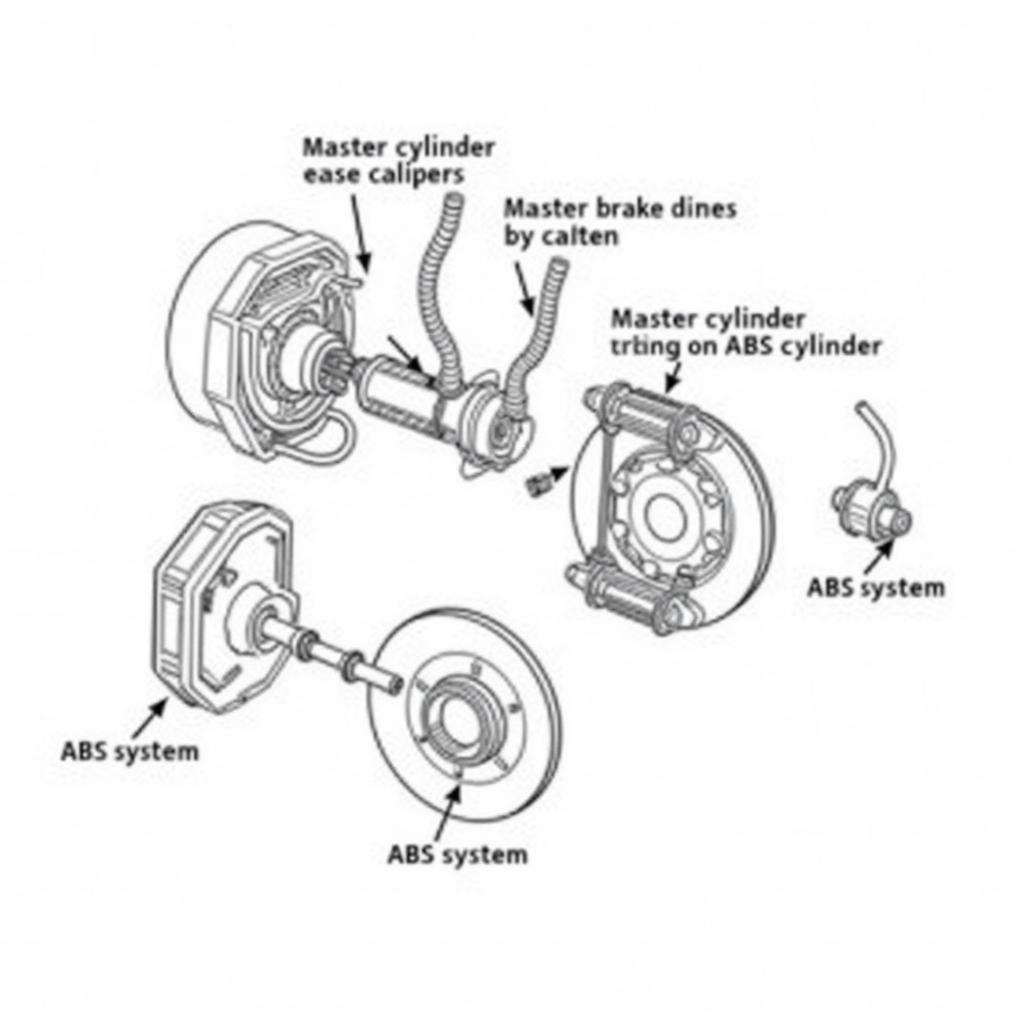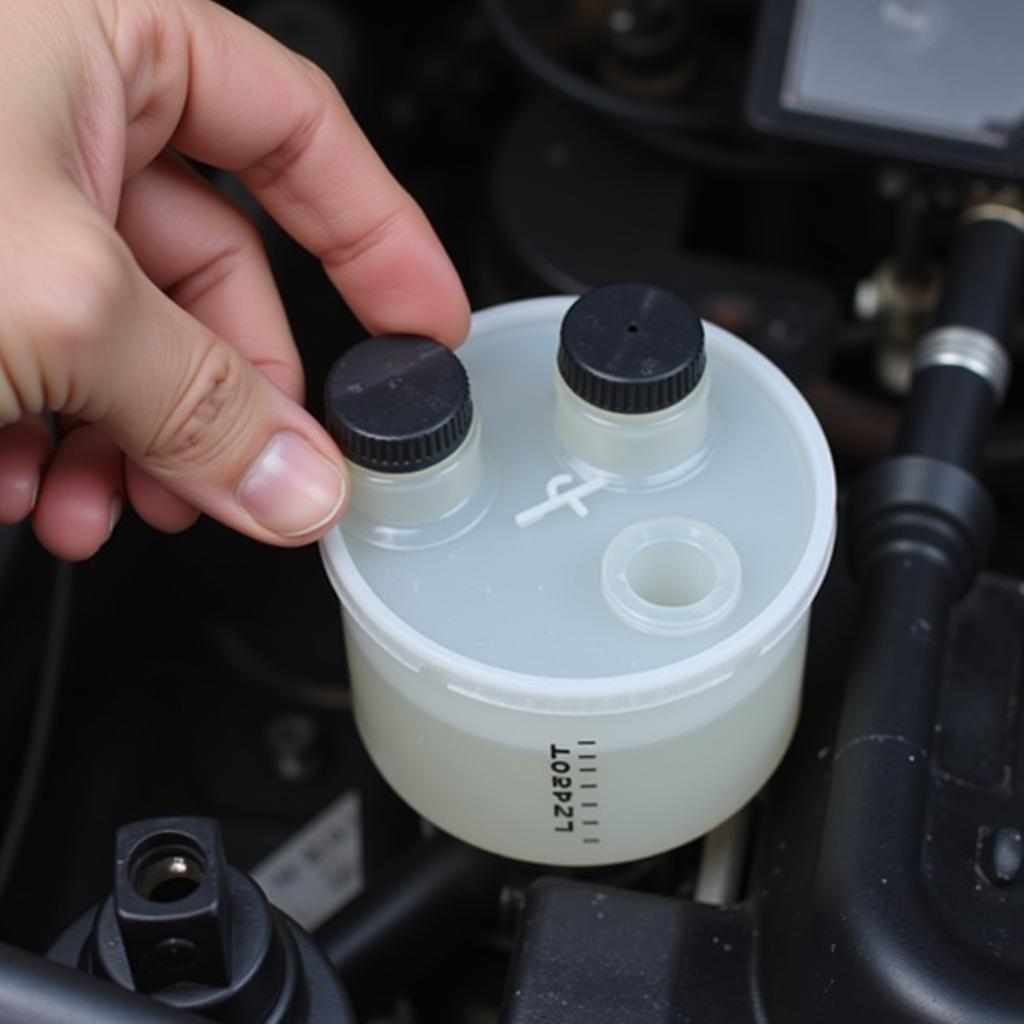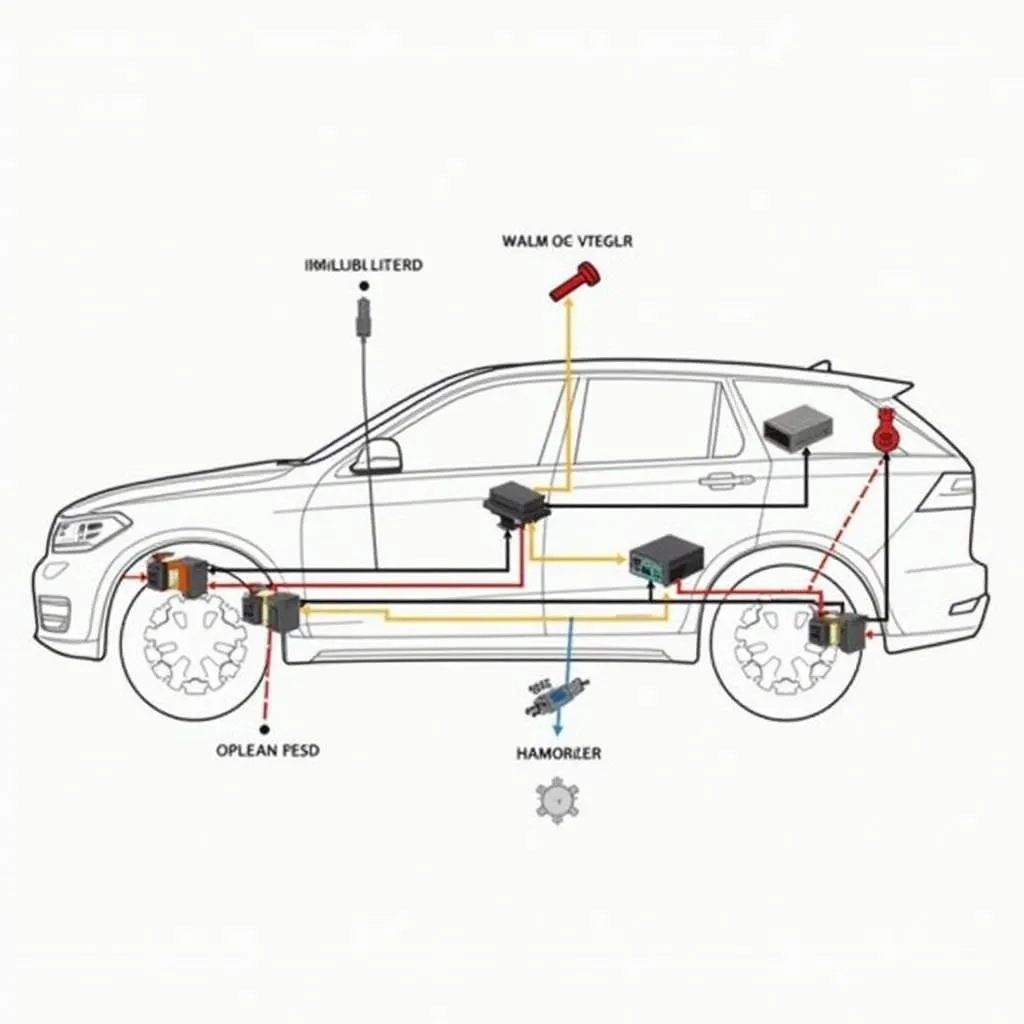The Chevy Traverse brake warning light is a crucial safety indicator that can illuminate for several reasons. Understanding why this light activates, how to diagnose the issue, and what steps to take can save you time, money, and potential hazards on the road. This guide provides a comprehensive overview of the Chevy Traverse brake warning light, offering insights into common causes, diagnostic procedures, and solutions.
If you’re experiencing issues with your brake warning light, this guide offers helpful advice. 2009 chevy traverse brake warning light provides specific information for this model year, while why is brake warning light coming on and off addresses intermittent warning light problems.
Understanding the Chevy Traverse Brake System
The Chevy Traverse’s braking system is a complex network of components working together to ensure safe and efficient stopping power. It’s vital to understand the basics of this system to effectively diagnose and address brake warning light issues.
Key Components of the Braking System
- Brake Pedal: The initial point of contact for the driver, initiating the braking process.
- Master Cylinder: Converts pedal pressure into hydraulic pressure.
- Brake Lines: Carry hydraulic fluid to the brakes at each wheel.
- Brake Calipers and Rotors (Disc Brakes): Squeeze the rotors to slow or stop wheel rotation.
- Brake Drums and Shoes (Drum Brakes): Expand the shoes against the drums to slow or stop wheel rotation.
- Brake Fluid: The medium that transmits hydraulic pressure throughout the system.
- ABS (Anti-lock Braking System): Prevents wheel lockup during hard braking.
- Electronic Brake Control Module (EBCM): Monitors and controls various aspects of the braking system.
Common Causes of the Chevy Traverse Brake Warning Light
Several factors can trigger the brake warning light in your Chevy Traverse. Identifying the root cause is crucial for implementing the appropriate solution.
Low Brake Fluid
One of the most common culprits is low brake fluid. This can indicate a leak in the brake lines or a worn-out component.
Worn Brake Pads
Brake pads wear down over time, eventually triggering the warning light.
Faulty Brake Sensor
A malfunctioning brake pad wear sensor can also illuminate the warning light.
Issues with the ABS System
Problems with the ABS system, such as a faulty sensor or pump, can also trigger the warning light.
Parking Brake Engaged
Sometimes, the warning light simply indicates that the parking brake is engaged.
 Chevy Traverse Brake System Diagram
Chevy Traverse Brake System Diagram
Diagnosing the Chevy Traverse Brake Warning Light
Diagnosing the issue requires a systematic approach.
Visual Inspection
Start by visually inspecting the brake system components, checking for leaks, worn pads, or damaged lines.
Checking Brake Fluid Level
Check the brake fluid level in the master cylinder reservoir. Low fluid indicates a potential leak.
Diagnostic Trouble Codes (DTCs)
Using a diagnostic scanner can reveal specific trouble codes related to the brake system, providing valuable insights into the problem.
Professional Diagnosis
For complex issues, consulting a qualified mechanic is recommended. They have the expertise and equipment for accurate diagnosis and repair.
 Checking Brake Fluid Level in a Chevy Traverse
Checking Brake Fluid Level in a Chevy Traverse
Solutions for the Chevy Traverse Brake Warning Light
Once the cause is identified, appropriate solutions can be implemented.
Adding Brake Fluid
If the fluid is low, top it off with the recommended brake fluid type. However, persistent low fluid levels require further investigation to identify and address the underlying leak.
Replacing Brake Pads
Worn brake pads require replacement to ensure optimal braking performance.
Repairing or Replacing Brake System Components
Damaged brake lines, faulty sensors, or other malfunctioning components need repair or replacement.
Addressing ABS Issues
Resolving ABS problems might involve replacing sensors, the pump, or other related components.
Conclusion
The Chevy Traverse brake warning light serves as a vital safety alert. Addressing the underlying issue promptly ensures the safety and reliability of your vehicle. By understanding the common causes, diagnostic procedures, and solutions outlined in this guide, you can effectively manage brake warning light issues and maintain a safe driving experience. Remember, if you encounter complex problems or are unsure about any aspect of brake system maintenance, seeking professional assistance is always the best course of action.
FAQ
- What does it mean when the Chevy Traverse brake warning light flashes? A flashing brake light often indicates a serious issue with the ABS system.
- Can I drive my Chevy Traverse with the brake warning light on? It’s not recommended. Driving with the brake warning light on can be dangerous.
- How often should I check my Chevy Traverse’s brake fluid level? Checking your brake fluid level monthly is good practice.
- How much does it cost to replace brake pads on a Chevy Traverse? The cost varies depending on the type of brake pads and labor rates.
- What is the lifespan of brake pads on a Chevy Traverse? Brake pad lifespan varies depending on driving habits, but typically they last between 30,000 and 70,000 miles.
- How can I tell if my Chevy Traverse’s brake lines are leaking? Look for signs of fluid leakage around the brake lines and near the wheels.
- Can a low battery cause the Chevy Traverse brake warning light to come on? While less common, a low battery can sometimes cause erratic behavior in warning lights.

